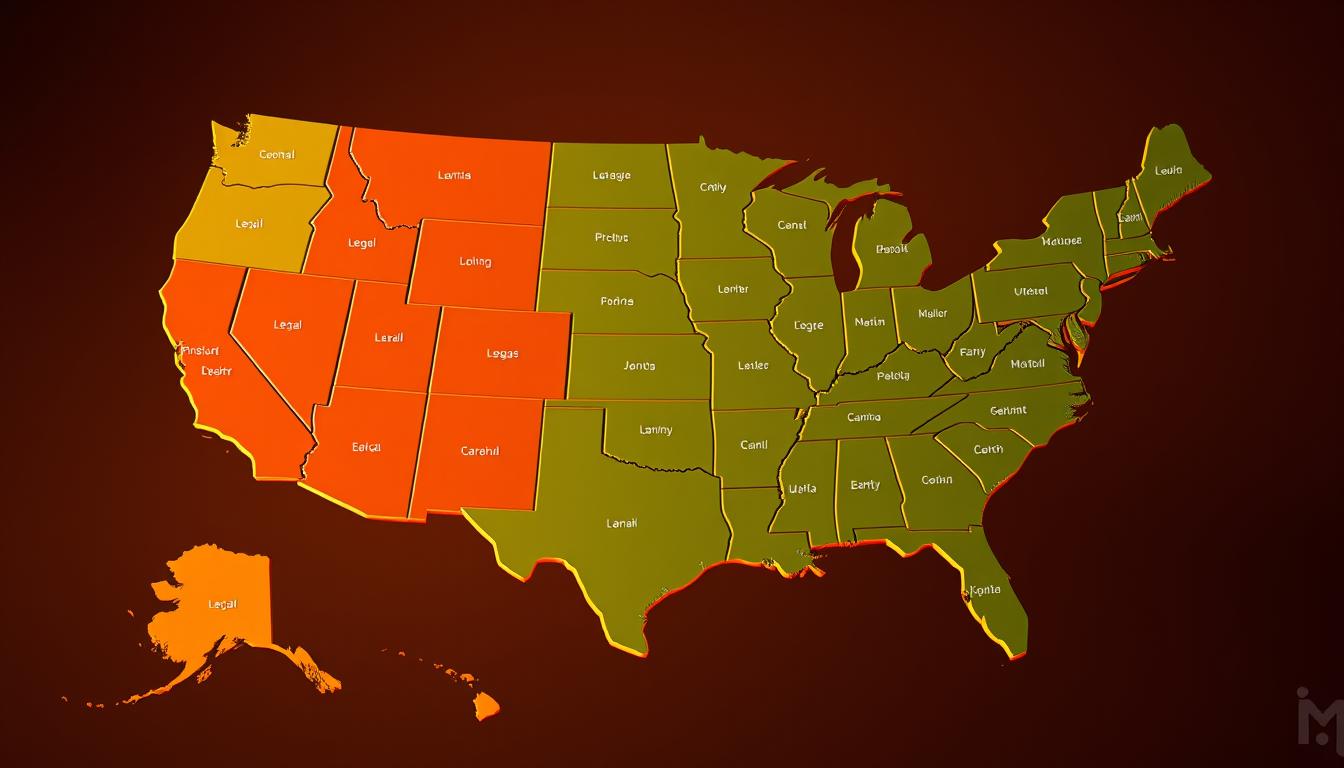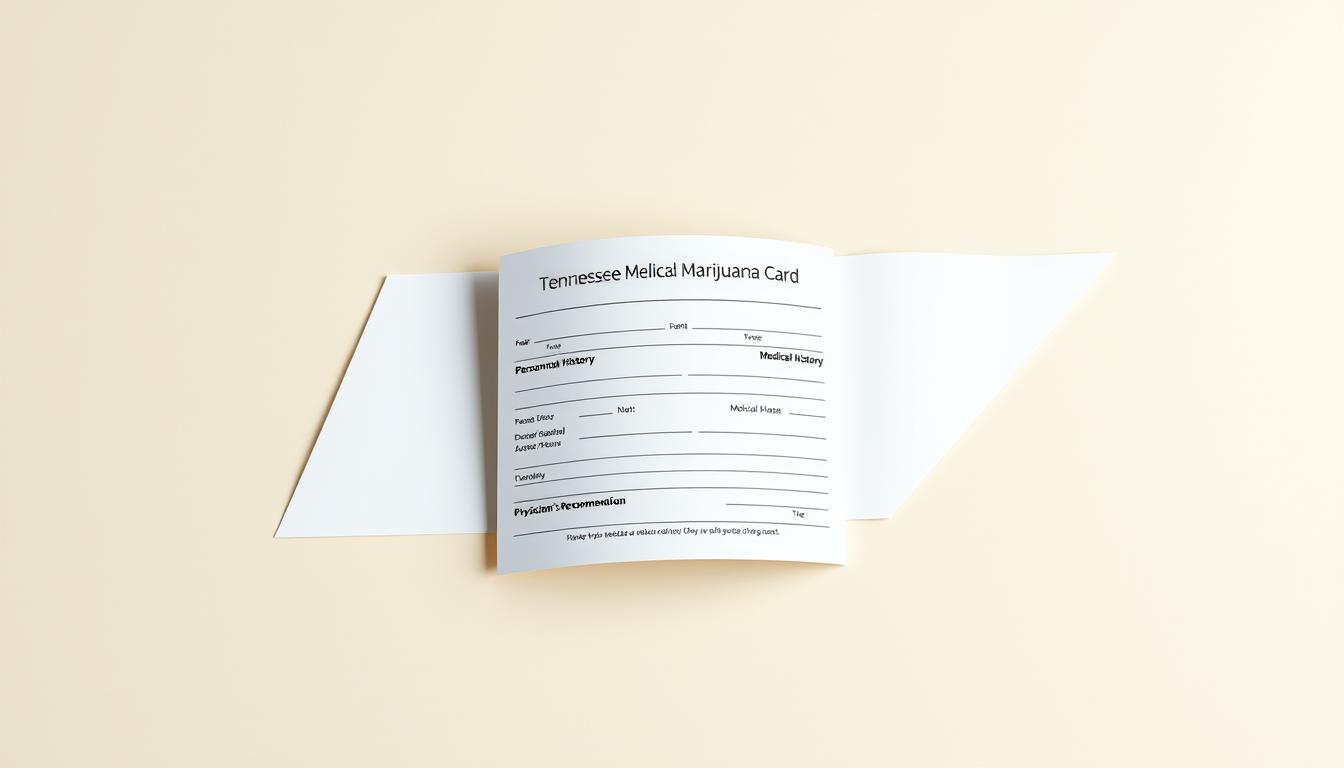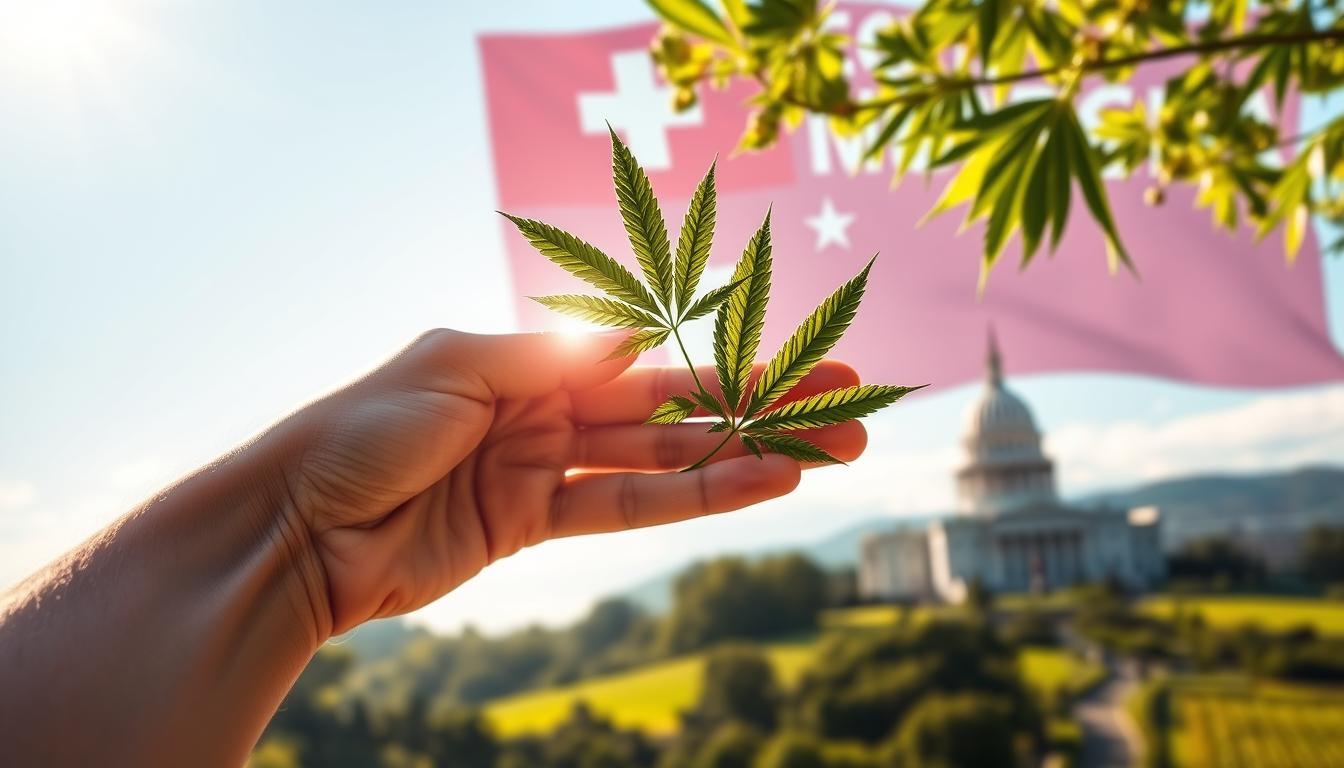The rules on medical marijuana legality change a lot from state to state in the US. By February 2024, 47 states, the District of Columbia, and 3 territories allowed its use for health reasons.
More and more people see the good that medical marijuana can do. But, the laws about it vary a lot. This affects both those who need it and those who provide it.
Knowing where medical marijuana legality stands is key for those looking to use it for health reasons. This article will give you a detailed look. It aims to help you understand the laws in different parts of the US.
Overview of Medical Marijuana Legislation
It’s important for patients and healthcare providers to know the laws about medical marijuana. Medical marijuana is legal in 39 states, 4 U.S. territories, and Washington D.C. for medical use.
The laws on medical marijuana are different in each state. They cover how it’s regulated, distributed, and who can use it. This shows why it’s key to understand the laws and what they mean.
Definition of Medical Marijuana
Medical marijuana is cannabis or its parts used to treat medical conditions. It includes dried flowers, oils, and edibles. These products help with symptoms of chronic illnesses.
How each state defines and regulates medical marijuana can differ. Some states have more detailed programs than others.
Importance of Medical Use
Medical marijuana can help patients with many health issues. It can ease chronic pain, nausea from chemotherapy, and muscle spasms in multiple sclerosis.
Medical marijuana regulations are vital for patient safety and access to treatment. Knowing these rules is important for both patients and healthcare workers.
Many states have medical cannabis laws to help patients. These laws vary, with some states having more access than others.
Now, 39 states and Washington D.C. allow medical marijuana. This shows more states are accepting its medical benefits.
Medical Marijuana Laws by State
The US has different rules for medical marijuana in each state. Some states have full programs, while others have very limited or no access. Right now, 38 states, Washington D.C., and 3 territories have full medical marijuana programs. On the other hand, 9 states only allow CBD/low-THC products.
States with Full Medical Marijuana Programs
States with full programs offer a wide range of cannabis products. They have rules for growing, selling, and using medical marijuana. California, Colorado, and Florida are leaders in making medical marijuana legal.
States with Limited Medical Access
Some states have strict rules for medical marijuana. For example, Texas and Georgia only allow low-THC cannabis oil for a few conditions.
States with No Medical Marijuana Laws
There are also states where medical marijuana is banned. Idaho, Nebraska, and Kansas don’t allow it. But, there are efforts to change these laws.
It’s important to know the laws on medical marijuana in each state. This helps patients, doctors, and lawmakers. As laws change, it’s key to stay updated.
States with Complete Programs
The US has seen big changes in medical marijuana laws. Many states now have full programs. These programs let patients use different cannabis products for health issues.
California: A Pioneering State
California was the first to allow medical marijuana in 1996 with Proposition 215. This move helped other states follow. Today, California’s program is very detailed, with many products for patients.
Patients can use medical marijuana for chronic pain, nausea, and severe muscle spasms.
Colorado: Early Adopters of Legalization
Colorado was quick to adopt medical marijuana laws. The state’s program is strong, with clear rules. Colorado’s market has a wide variety of products, like flowers, concentrates, edibles, and topicals.
Key parts of Colorado’s program include:
- Regulatory Framework: The state has strict rules for growing, processing, and selling medical marijuana.
- Patient Access: Patients with a valid card can find many cannabis products.
- Product Variety: The market has many products to meet different patient needs.
Florida: Expanding Access for Patients
Florida’s medical marijuana program has grown a lot. The state has made it easier for patients to get medical marijuana, with licensed dispensaries.
Florida’s program is known for:
- Expansion of Qualifying Conditions: Florida keeps adding more health issues that qualify for treatment with medical marijuana.
- Dispensary Network: Florida has more licensed dispensaries, making it easier for patients to find medical marijuana.
States with Limited Medical Access
Medical marijuana laws vary a lot in the US. Some states have full programs, while others are very limited. This means some patients can’t get the cannabis they need for health reasons.
Texas: Stricter Regulations in Place
Texas has strict rules for medical marijuana. The state only allows low-THC cannabis oil for a few health issues. To get this oil, patients must meet strict rules. For more on medical cannabis laws, check Wikipedia’s page on Medical cannabis in the United States.
Georgia: Low-THC Medical Cannabis Oil
Georgia’s program is only for low-THC medical cannabis oil. This oil is for patients with serious health problems. Patients must sign up with the state to get it.
Alabama: Recent Amendments in Legislation
Alabama has updated its medical marijuana laws. Now, more health conditions qualify, and patients have better access. But, the program is not as wide-ranging as some other states.
The rules in Texas, Georgia, and Alabama show how complex medical marijuana regulations are in the US. It’s important for patients to know these differences to get the cannabis they need.
States Without Medical Marijuana Laws
Idaho, Nebraska, and Kansas have not passed medical marijuana laws. They are strict on cannabis, not allowing it for medical use.
These states show the ongoing debate on cannabis use. For example, Idaho has always opposed cannabis legalization.
Idaho: Current Stance on Cannabis
Idaho is one of the few states without a medical marijuana program. Bills to allow it have faced strong opposition. This keeps Idaho’s strict cannabis policies in place.
Nebraska: Medical Use Prohibited
Nebraska also doesn’t allow medical marijuana. Despite some efforts to change this, the state sticks to its conservative drug policies.
Kansas: Ongoing Legislative Discussions
Kansas has not legalized medical marijuana yet. But, there are ongoing talks and proposals to possibly change this in the future.
To see how marijuana laws vary across states, visit https://disa.com/marijuana-legality-by-state. It shows the different legal situations.
The lack of medical marijuana laws in some states shows the US’s varied views on cannabis. Key differences include:
- Legislative resistance to cannabis legalization
- Public opinion and cultural attitudes towards marijuana
- Concerns over possible abuse and regulatory challenges
Understanding these factors helps us see the complexity of medical marijuana laws in different states.
The Application Process for Medical Marijuana
It’s important for patients to know how to apply for medical marijuana. This includes knowing what you need to qualify, the documents required, and how to renew your application. Each state has its own rules for these steps.
To start, you must meet certain eligibility criteria. This means you need to have a medical condition that the state says qualifies. These conditions often include chronic pain, severe nausea, and other serious illnesses.
Eligibility Criteria
The rules for who can get medical marijuana vary a lot from state to state. Some states have broad programs that cover many conditions. Others are more restrictive.
- Chronic pain
- Severe nausea
- Muscle spasms
- Other debilitating conditions as specified by state laws
Required Documentation
To apply, you’ll need to provide required documentation. This usually includes a doctor’s note, your medical history, and proof you live in the state.
The exact documents you need might change. But, you’ll often need:
- A doctor’s written recommendation
- Your medical records
- Proof of where you live
Renewal Procedures
Getting medical marijuana isn’t a one-time deal. You’ll need to go through renewal procedures to keep your access. How often you need to renew depends on the state, usually every one to two years.
To renew, you’ll likely need to:
- Update your doctor’s recommendation
- Provide new medical records
- Pay any renewal fees
Knowing these steps helps patients smoothly go through the application and renewal process. This way, they can keep getting the medical marijuana they need.
The Role of Cannabis Physicians
The medical marijuana industry is growing fast. Cannabis doctors play a key role in helping patients. They check if medical marijuana is right for each patient. This is important for its legal use in different states.
Importance of Medical Recommendations
Medical advice from cannabis doctors is vital for legal use of medical marijuana. These recommendations let patients get cannabis products. They also make sure medical marijuana is used safely.
Doctors look at a patient’s health to see if cannabis is a good treatment. This is important in states where cannabis is legal for certain health issues.
Key aspects of medical recommendations include:
- Evaluation of the patient’s medical history
- Assessment of the patient’s current medical condition
- Discussion of the benefits and risks of medical marijuana
Qualifications for Cannabis Doctors
Cannabis doctors need certain qualifications. They must have a medical degree and a license to practice medicine. This is in the state where they recommend medical marijuana.
Many states also require doctors to take courses on medical marijuana. This keeps them up-to-date on the latest research and laws.
Essential qualifications and skills include:
- A valid medical license
- Knowledge of medical marijuana laws and regulations in their state
- Understanding of the benefits and risks of cannabis
Benefits of Medical Marijuana
Medical marijuana is gaining recognition for its health benefits. More states are legalizing it, giving patients a new treatment option. This option has shown promise in helping with many medical conditions.
Pain Management
One key benefit of medical marijuana is its pain relief. Research shows it can reduce chronic pain and inflammation. It’s a good alternative for those looking beyond traditional pain meds.
Treatment of Chronic Conditions
Medical marijuana helps with chronic conditions like epilepsy and multiple sclerosis. The cannabinoids in cannabis can lessen symptoms and improve life quality. This is a big plus for those dealing with these conditions.
In states with medical cannabis laws, patients can get cannabis products safely. They get treatment under the watch of healthcare experts.
Psychological Benefits
Medical marijuana also offers psychological benefits. It can reduce anxiety, stress, and PTSD symptoms in some. But, how it affects each person can vary, depending on the product used.
As more states allow medical marijuana, we’ll see more research. This will help us understand its benefits and limits better.
Challenges in Medical Marijuana Legislation
Medical marijuana is becoming more accepted in many US states. Yet, several challenges remain in its legislation. These include the conflict between federal and state laws, the stigma around cannabis, and the high cost of access.
Federal Restrictions vs. State Laws
The federal government sees cannabis as a Schedule I substance. This clashes with state laws that allow medical marijuana. This gap can confuse patients and providers, leading to legal problems.
Key issues include:
- Legal inconsistencies between federal and state laws
- Potential for federal prosecution despite state legality
- Difficulty in accessing banking services due to federal restrictions
Stigmatization of Medical Cannabis
The negative views on cannabis use affect medical marijuana’s image. This stigma makes patients hesitant to try it. It also influences lawmakers’ decisions.
Economic Barriers for Patients
High prices for products, doctor fees, and paperwork add up. These costs can be overwhelming.
Addressing these challenges is key to making medical marijuana available to those who need it. Laws and education can help overcome these hurdles.
Future Trends in Medical Marijuana Legislation
The future of medical marijuana laws is set for big changes. This is due to growing public support and advocacy efforts. More states might legalize medical marijuana, leading to changes in federal laws and rules.
Legislative Changes on the Horizon
Several states plan to update their medical marijuana laws soon. Legislative changes could make marijuana easier to research and use. This could help more patients get access to it.
There’s also a push to make medical marijuana rules the same everywhere. This could make things easier for patients and businesses in different states.
Public Opinion Shifts
Views on medical marijuana have changed a lot in the last ten years. More people now think it should be legal for medical use. This change comes from learning about its benefits, like helping with chronic pain and other health issues.
Advocacy Efforts and Support Networks
Groups pushing for medical marijuana laws are very important. They help spread the word and push for changes. These groups work with lawmakers to make medical marijuana legal.
Support groups for patients and businesses are growing too. They offer help and advice for those dealing with medical marijuana laws and rules.
As the medical marijuana industry grows, we’ll likely see more advancements in legislation. This means more patients will have access to it across the United States.
Conclusion: The Evolving Landscape of Medical Marijuana
The rules around medical marijuana are changing in the US. Different states have their own ways of handling it. It’s important to know what’s happening with medical cannabis laws.
Key Takeaways
States like California and Colorado have good systems for medical marijuana. But, places like Idaho and Nebraska are much stricter. They don’t allow it.
Ongoing Education and Awareness
As laws change, it’s key to keep learning. Patients, doctors, and lawmakers need to stay up to date. Knowing the laws and how to apply for medical marijuana is important.
Learning about cannabis doctors and the benefits of medical marijuana helps people make better choices. As more people support it, laws might change. This could open up new possibilities for medical marijuana.


